With the experience of the 2007 Games now under their belt, I emailed Stephen Steiner of DeltaX several questions. Here are his replies (along with those of David Lashmore of Nanocomp).
1. [Space Elevator Blog – SEB] – Where do you do your actual “Tether development” work? Is it all done at the Nanocomp facilities with DeltaX people taking part? Is there a lab on the MIT campus where some/all of this work is done?
[Stephen Steiner – DeltaX] – The tether development is done both at Nanocomp and at MIT. MIT has some capabilities that Nanocomp doesn’t and vice versa. Obviously the manufacture of the raw materials is done at Nanocomp, however textiling, special processing, and tether-related research and development are done at MIT. We meet about once a month to cross-pollinate our progress.
2. [SEB] – Prior to being approached by DeltaX, had you ever heard of the idea of a Space Elevator?
[David Lashmore – Nanocomp] – Yes, I have known about the concept for many years.
3. [SEB] – Why are you participating in this challenge? What benefits do you see accruing to Nanocomp for doing so?
[Nanocomp] – The main reason for participating in this challenge is to help us improve our product. Winning this challenge will require an extraordinary material, not only strong on a small scale but one that is more or less free of defects over a large scale. We have already demonstrated yarn production rates of 150 m/hour and made about 400m continuously. Our near term yarn goals are 1 km at about 4 N/tex breaking strength (about 8GPa) tested at 10 cm gauge length.
4. [SEB] – How are you goals different (if they are) between what you accomplished in the 2007 Games vs. what you want to accomplish this year?
[DeltaX] – Our goals for 2007 were to qualify with an all nanotube-based tether, which we did. The knot failure really didn’t bother us–we were just glad to come in with a tether that met the competition criteria. In fact, our competition tether was made of mostly scrap nanotube yarn (albeit kilometers of it!)–the good stuff stayed at MIT for research and development. A year prior to the 2007 competition, even just qualifying with an all-nanotube specimen would not have been viable for us so we saw the feat as a significant technological step forward.
Our goal for 2008 is to demonstrate a tether which is at least competitive with aramid fiber composites. That said, we have some research in the pipeline that very well may push us into the range of a winning tether.
5. [SEB] – The Cambridge University team of Windle/Motta recently said that they are going to try and compete at this year’s Tether challenge. This is the team, of course, that recently announced the creation of nanotube fibers measured at ~9 GPa. In a DeltaX blog entry dated October 24^th , 2007, (a few weeks before the Cambridge announcement) you wrote; “An article appeared yesterday on the BBC’s website talking about Alan Windle’s group at the University of Cambridge, which is spinning nanotube yarns. A very interesting read–related to what we’re doing. Although the stuff we have in the works blows away Windle’s yarns.” Does this mean that you’re confident about your chances in the competition, even if a Cambridge team does compete?
[DeltaX] – We have some very exciting technology developments underway which boast similar numbers. Whether or not we manage/choose to scale them up to a tether for the competition this year is yet to be determined. We do know that anything a Cambridge, UK team would submit would at best be comparable in strength to tethers we have developed (although their mastery of knot science may be superior!). Some of the numbers which have been circulated by the media regarding nanotube yarn strength are actually strengths over the gage length of a yarn–in the case of the state of the art of nanotube yarns this generally means sub-millimeter lengths. This is because there are defects (imperfections) in the yarn’s microstructure which statistically manifest themselves over lengths greater than about one millimeter. In terms of macroscopic yarn strength we don’t believe their yarns are stronger. It is important to note, however, that strength isn’t the only parameter here that needs to be met.
Scale is also an issue, and Nanocomp is unmatched in terms of yarn production capacity. We of course would welcome their team to the competition and would be delighted to see a technological breakthrough, from any team, which advances the Elevator cause. We have the utmost respect for Prof. Windle and his group and greatly admire the work they have done.
6. [SEB] – If this is not revealing a trade secret, how will you get your tether fibers to “loop”? Last year, you used a knot – will you be doing something like that again or will you have another way to accomplish this?
[DeltaX] – We have two fundamentally different starting materials with which we go back and forth developing. We have textiles which are manufactured in loop form to start with (the person-sized fabrics you may have seen on the Internet) and we have yarns which are made linearly. Our yarns are generally stronger than our textiles, but it’s tricky to get the yarns into a loop. This said, our current research focus could make both problems irrelevant so we’ll have to see what pans out by competition time.
7. [SEB] – Recently you announced the ability to create 3’x6’ nanotube sheets. Are the nanotubes in these sheets made the same way as the nanotubes in the tether or is the process completely different?
[Nanocomp] – The nanotubes in both our non-woven sheet products or in our yarn products are created in similar ways. We can select whether our tubes are predominately single walls of approximately 1 nm diameter plus or minutes about 10% or whether they are dual walls of about 3 to 5 nm in diameter.
8. [SEB] – On the DeltaX website, you say the following: “We competed in the 2007 Spaceward Games in Salt Lake City, Utah, where we proudly lost, but qualified to compete, with a tether made out of 100% carbon nanotubes (mostly single-walled, but with some double-walled content).” For the uninitiated (including myself), can you explain the difference between “single-walled” and “double-walled” carbon nanotubes and tell us which is better/stronger and why?
[DeltaX] – A single-walled carbon nanotube is a hollow, cylindrical filament, generally between .5 and 1.5 nm in diameter. A double-walled carbon nanotube is basically two concentric single-walled carbon nanotubes, the outer wall being larger in diameter than the inner wall. Double-walled nanotubes can be several nanometers in diameter. Regarding which is stronger, this is a matter of some debate. As far as individual nanotubes go, the specific (weight-normalized) strength of a single-walled carbon nanotube is higher than that of double-walled carbon nanotubes as I understand it. It depends, however, how you make the measurement of course! Individual nanotubes are very difficult things to grab and do a tensile strength test on. As far as macroscopic materials goes, it doesn’t make a whole lot of difference for us right now, since the primary strength-bearing microstructures in our materials are composed of many close-packed nanotubes.
As to why our materials are “mostly single-walled, but with some double-walled content”, the nanotube growth process is inherently statistical and as such a distribution of nanotube diameters results–meaning our materials are mostly single-walled carbon nanotubes but have some double-walled carbon nanotubes in them. But generally it is our understanding that starting materials made of single-walled carbon nanotubes are what we want to aim for.
Thanks very much gentlemen – a very interesting set of responses (and I, for one, learned some things I didn’t know before)!
One small word of advice; if you’re looking for expertise in ‘knot-tying technology’, Bryan Laubscher is the guy to see 🙂 His tether entry in the 2006 Space Elevator Games (‘Team Fireball’) did part, but it wasn’t at the knot…

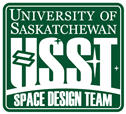 As has been mentioned in this blog (and elsewhere, I’m sure), DILAS supplied the laser the USST team used in their near-prize-winning run at the 2007 Space Elevator Games.
As has been mentioned in this blog (and elsewhere, I’m sure), DILAS supplied the laser the USST team used in their near-prize-winning run at the 2007 Space Elevator Games.
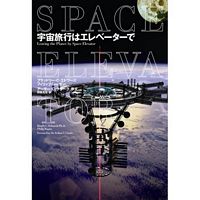
 We have a new competitor into this year’s Climber/Power-Beaming event,
We have a new competitor into this year’s Climber/Power-Beaming event,  On the current edition of Dr. David Livingston’s The Space Show,
On the current edition of Dr. David Livingston’s The Space Show,  “As for discussing space travel, Dr. Kaku pointed out the problem of the high cost of space access. He was asked if we needed breakthrough advanced propulsion to give us low cost space access, could we do it through the space elevator which he talks about in his book, or could space tourism or space solar power be an economic driver leading to a significantly higher launch rate which would enable commercially attractive launch prices.”
“As for discussing space travel, Dr. Kaku pointed out the problem of the high cost of space access. He was asked if we needed breakthrough advanced propulsion to give us low cost space access, could we do it through the space elevator which he talks about in his book, or could space tourism or space solar power be an economic driver leading to a significantly higher launch rate which would enable commercially attractive launch prices.” I received the following very exciting email from Brian Turner, Captain and Fearless Leader of the
I received the following very exciting email from Brian Turner, Captain and Fearless Leader of the 
 At last year’s Space Elevator Games, the
At last year’s Space Elevator Games, the 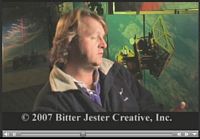 “
“ On the LaserMotive blog, Tom Nugent
On the LaserMotive blog, Tom Nugent 

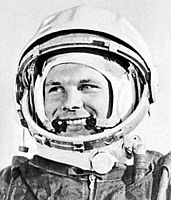
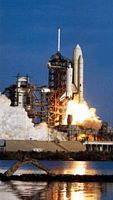
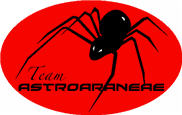 I received an email today from Michael Remington, Captain and Fearless Leader of
I received an email today from Michael Remington, Captain and Fearless Leader of  Bert Murray, Captain and Fearless Leader of the NSS Space Elevator Team, emailed me to let me know that their team recently did a demo for a BBC news/film team.
Bert Murray, Captain and Fearless Leader of the NSS Space Elevator Team, emailed me to let me know that their team recently did a demo for a BBC news/film team.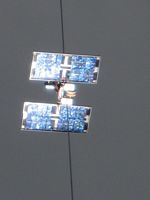
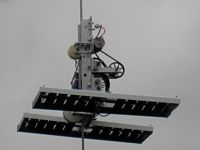
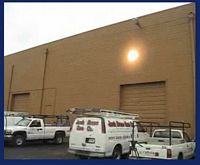
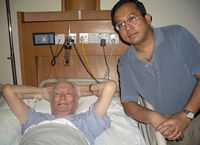

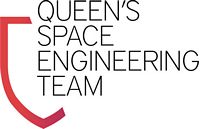 The Queen’s Space Engineering Team today announced more team position fulfillments:
The Queen’s Space Engineering Team today announced more team position fulfillments: Artist Maciek Rêbisz sent me today a
Artist Maciek Rêbisz sent me today a  Finally, on July 19th, The Space Frontier Foundation will be hosting the
Finally, on July 19th, The Space Frontier Foundation will be hosting the 
 Once again, all together now;
Once again, all together now;